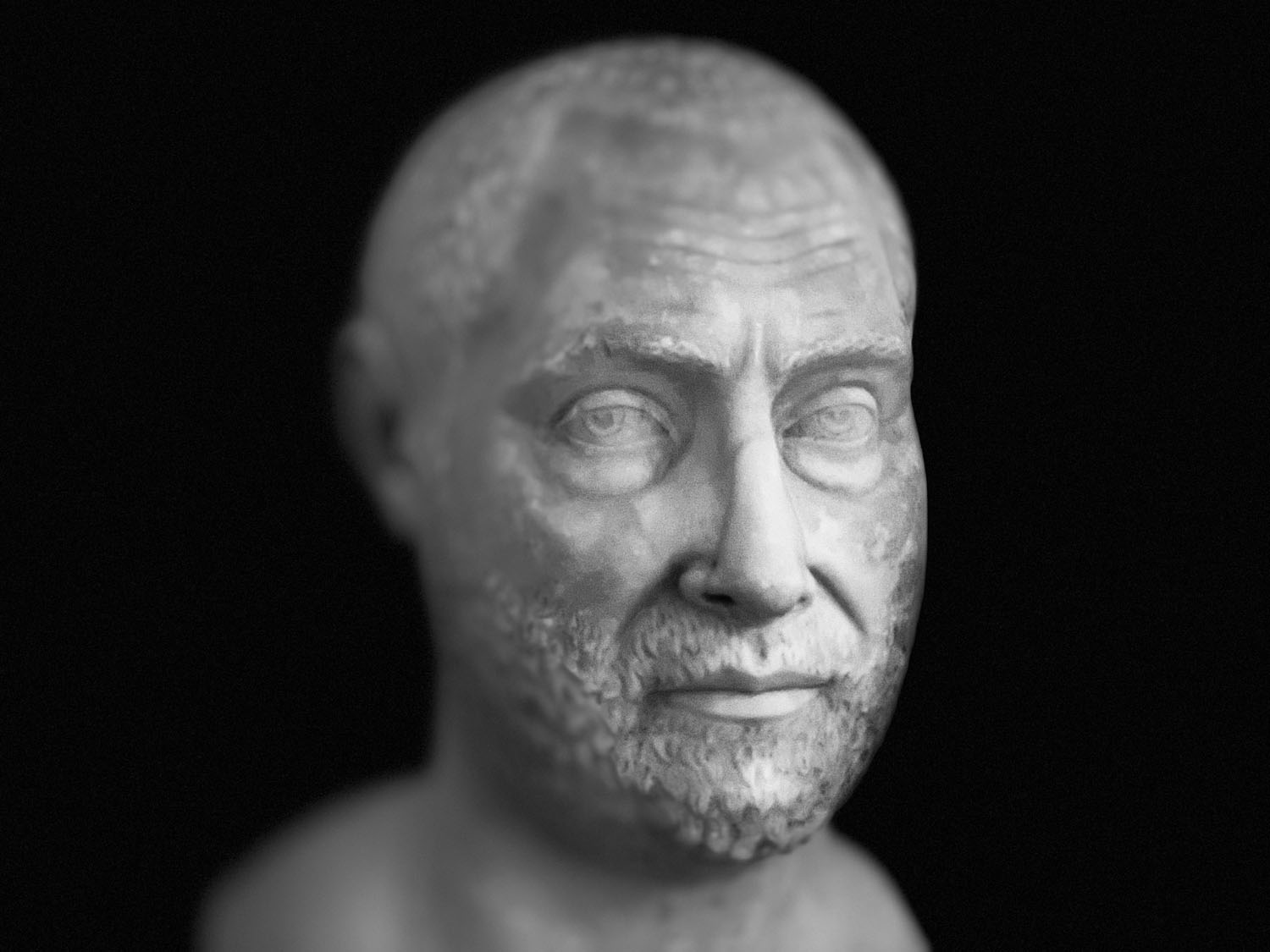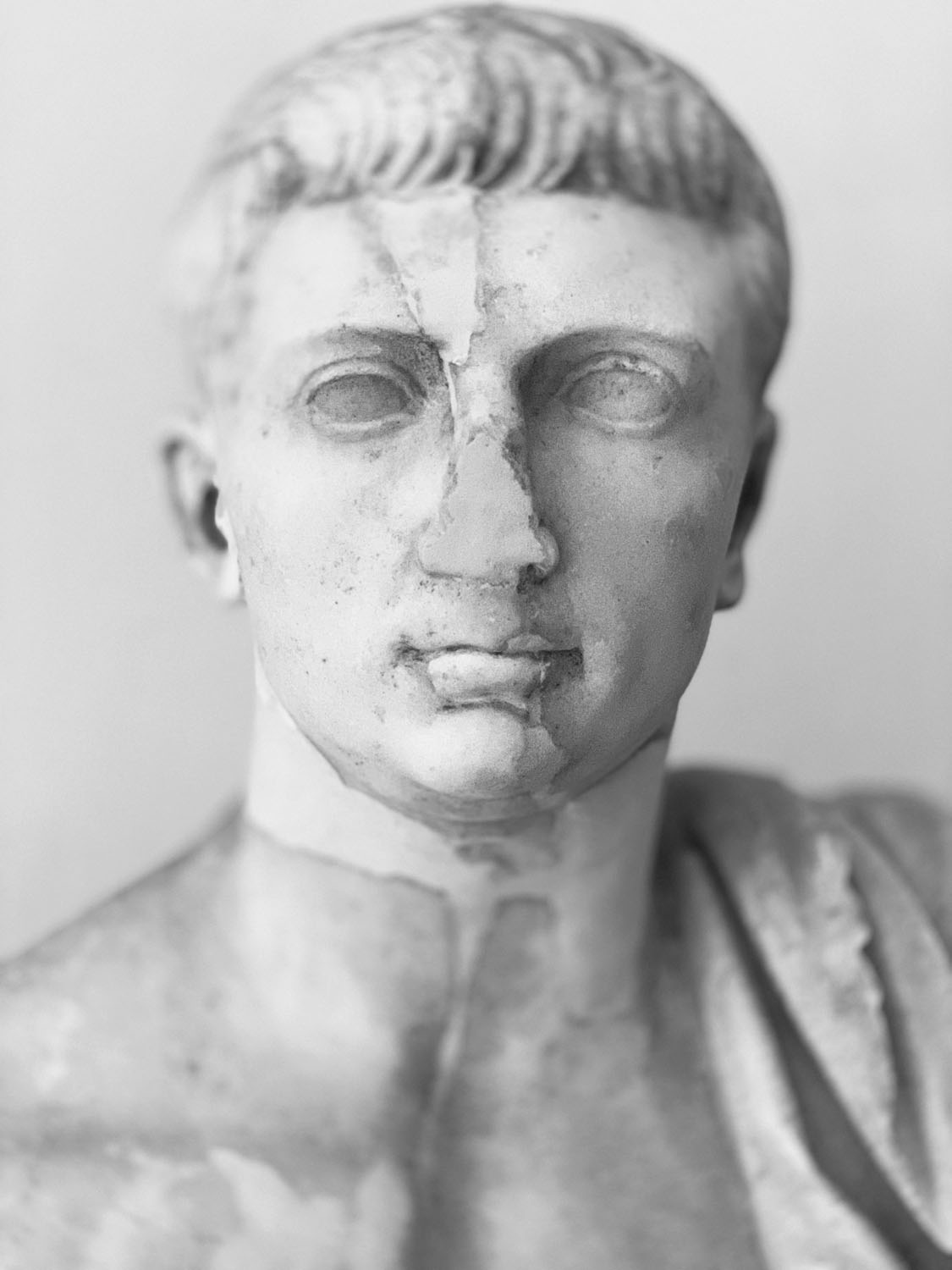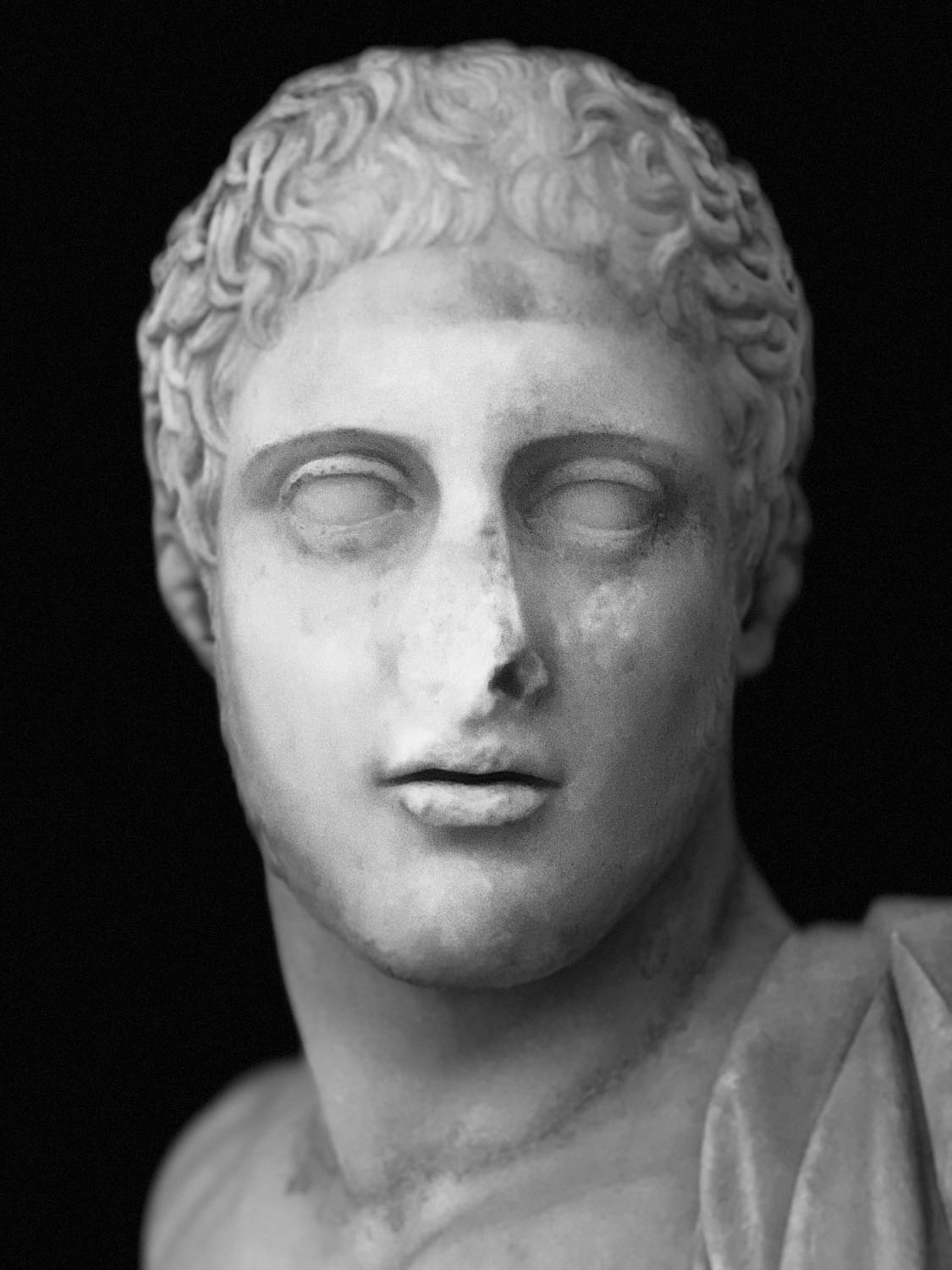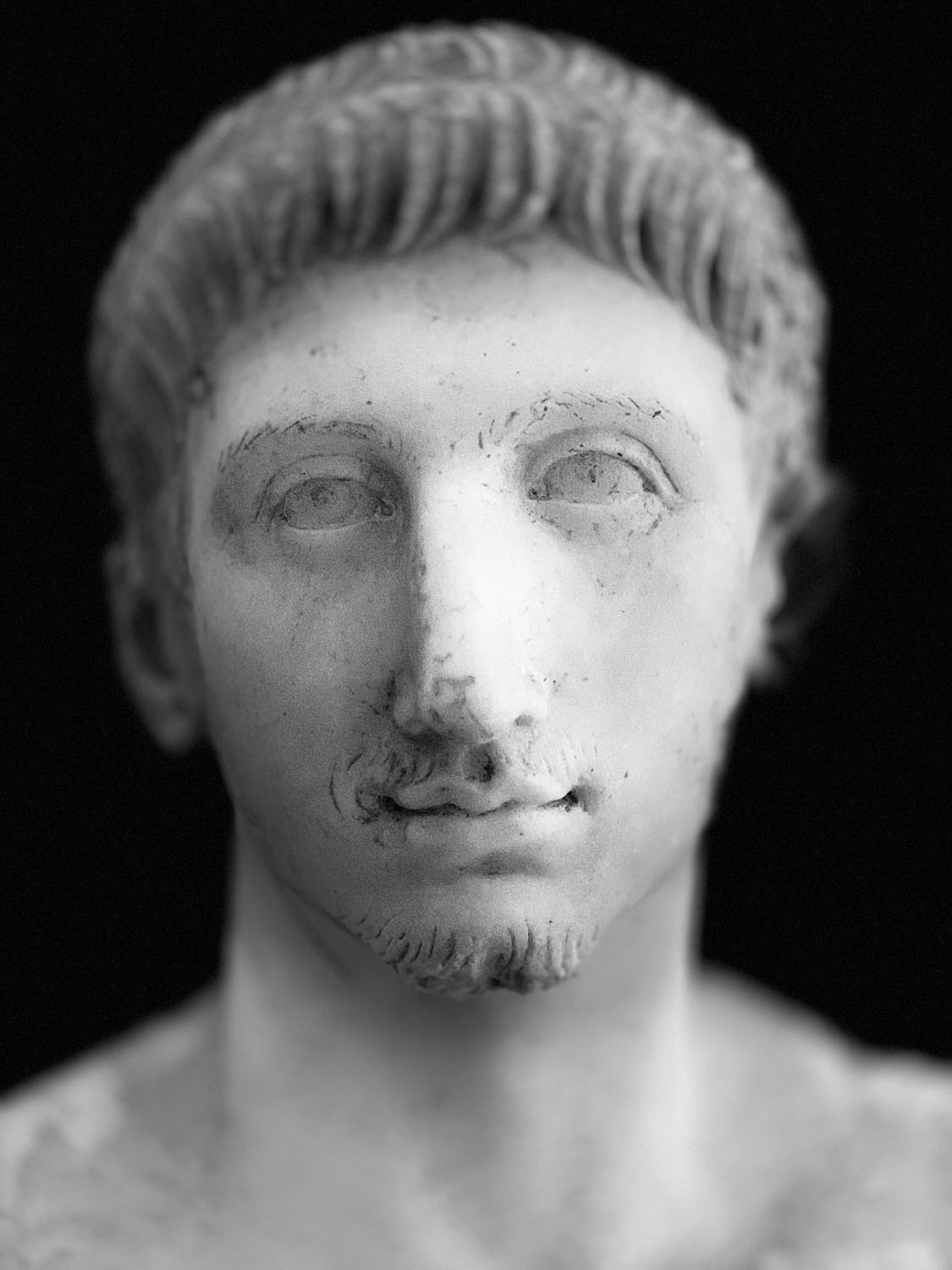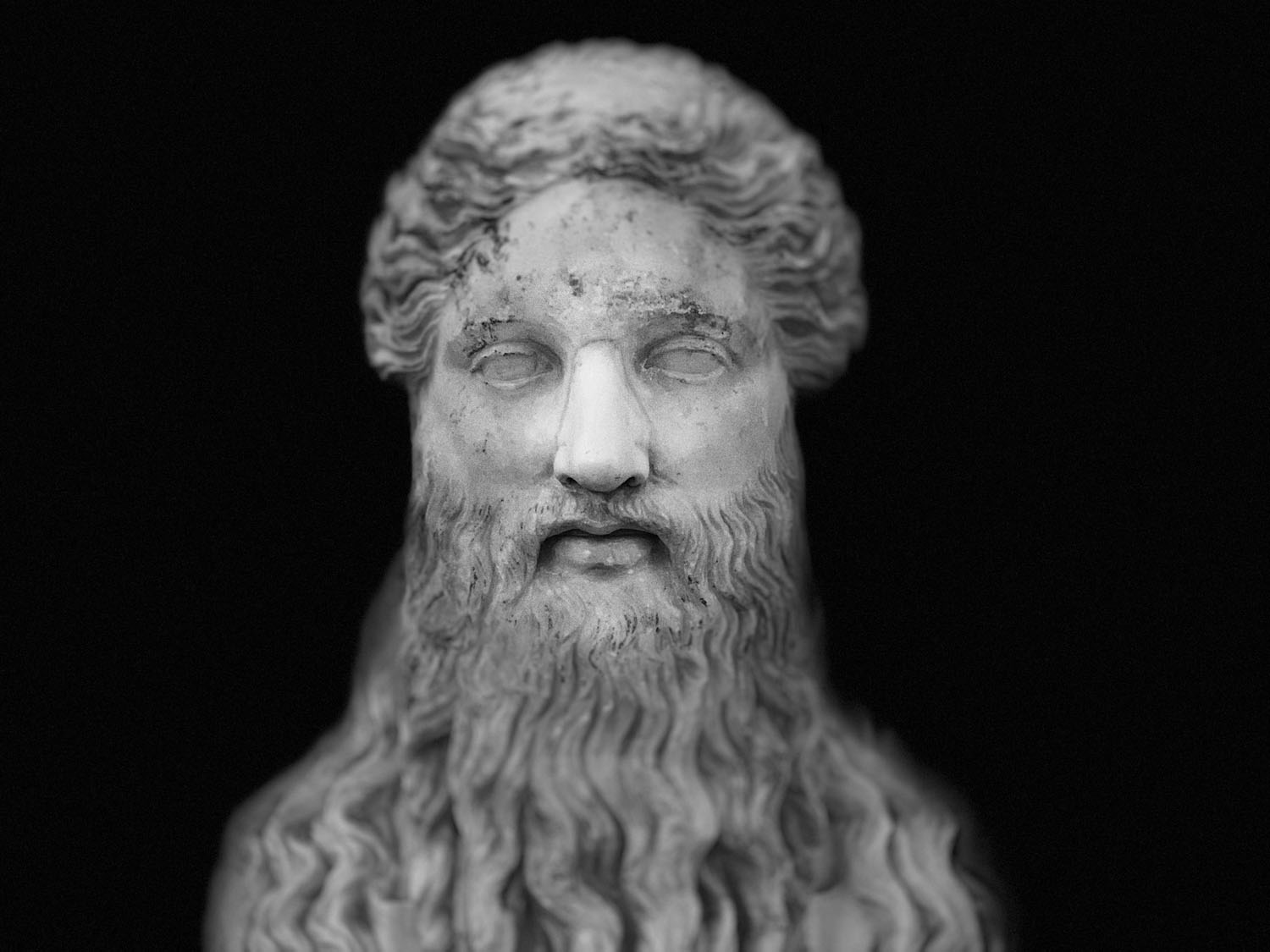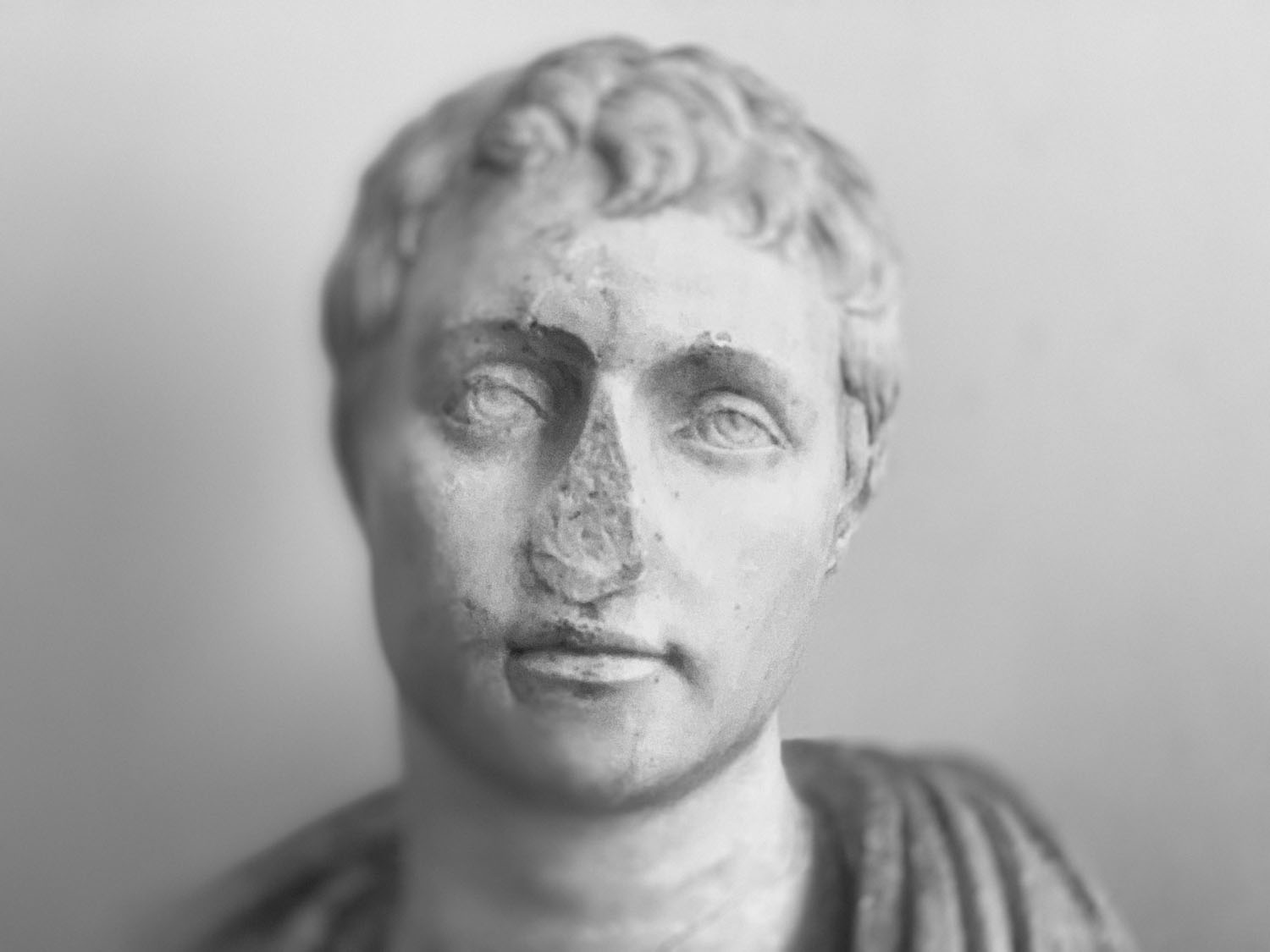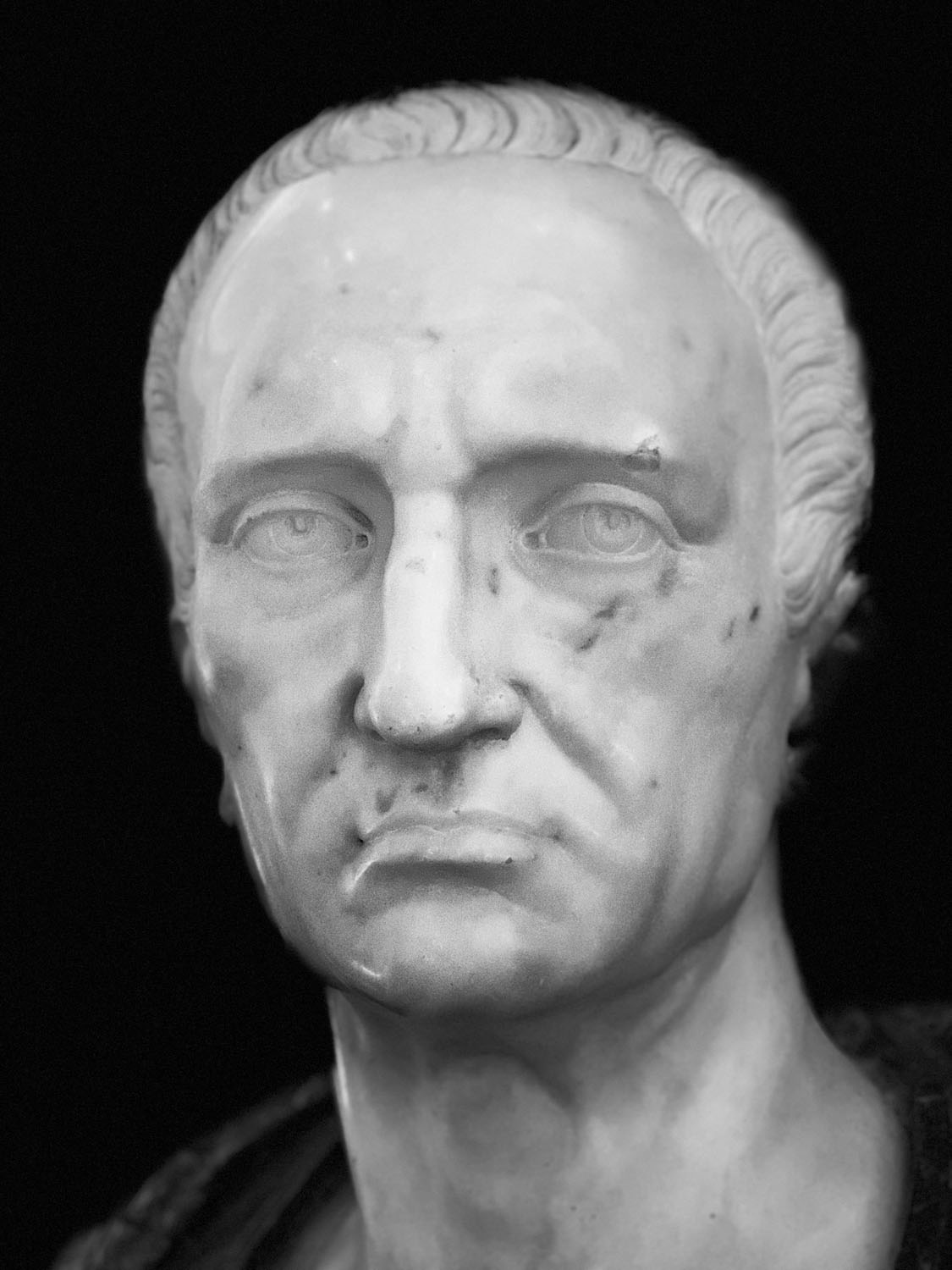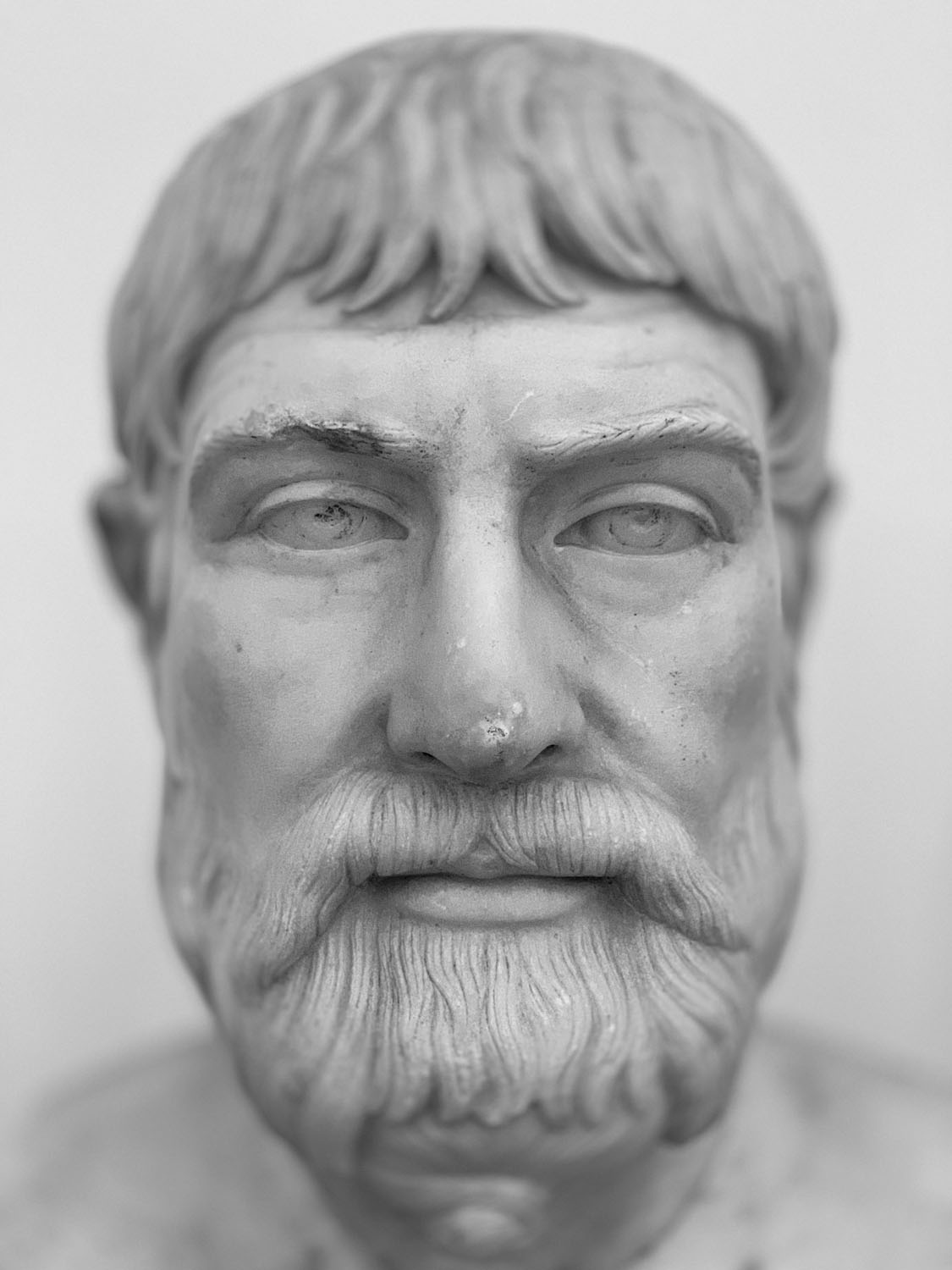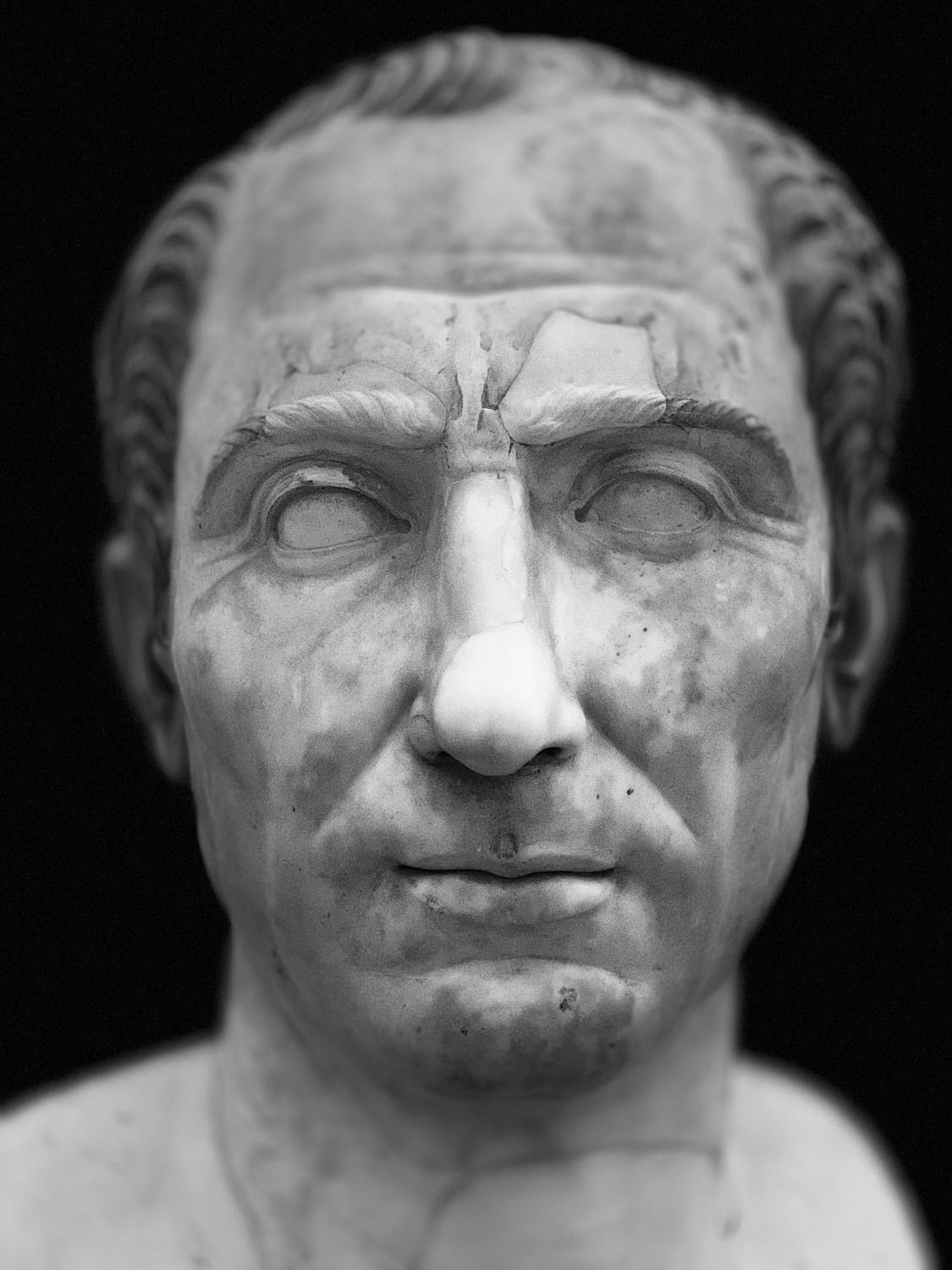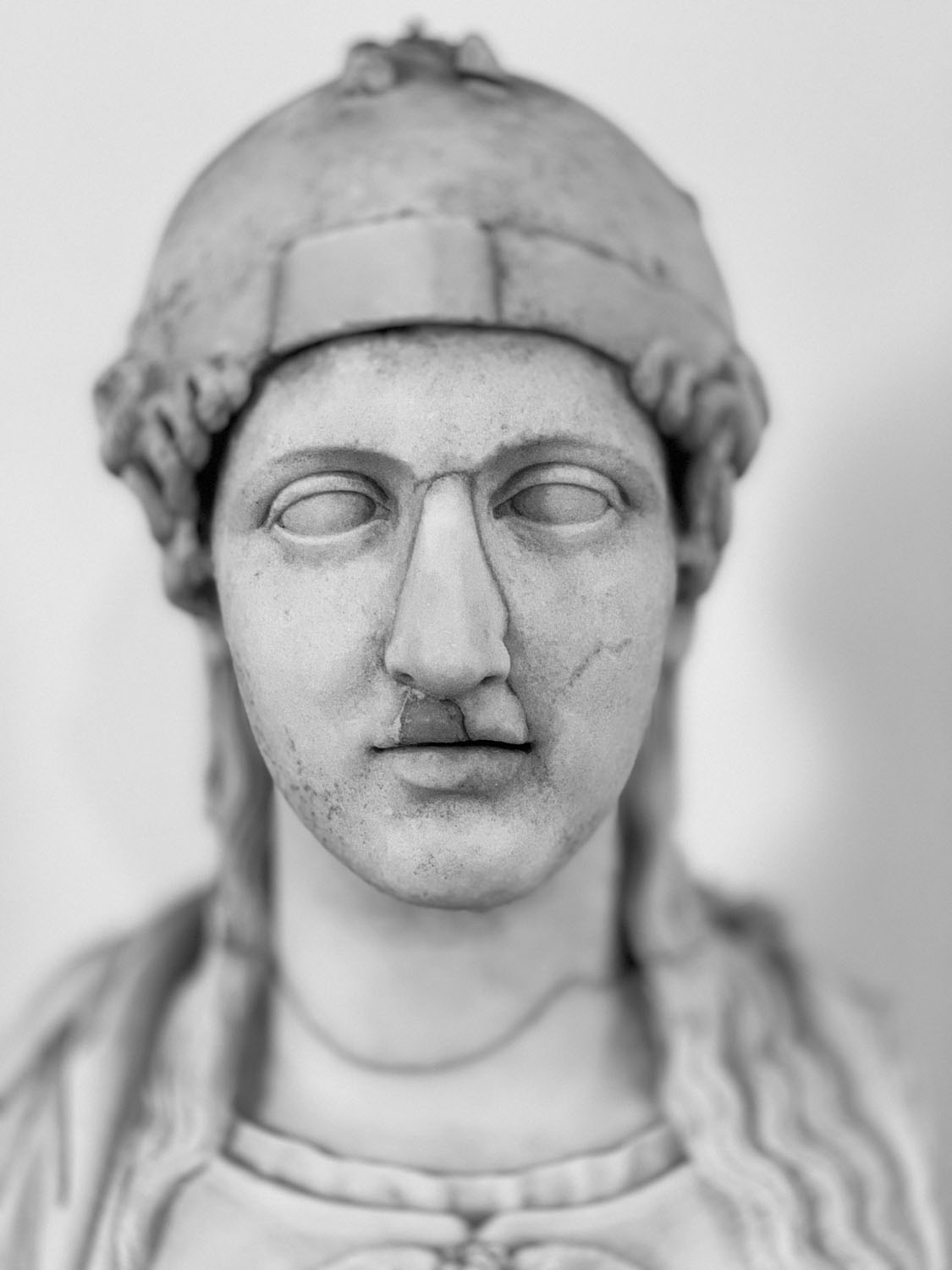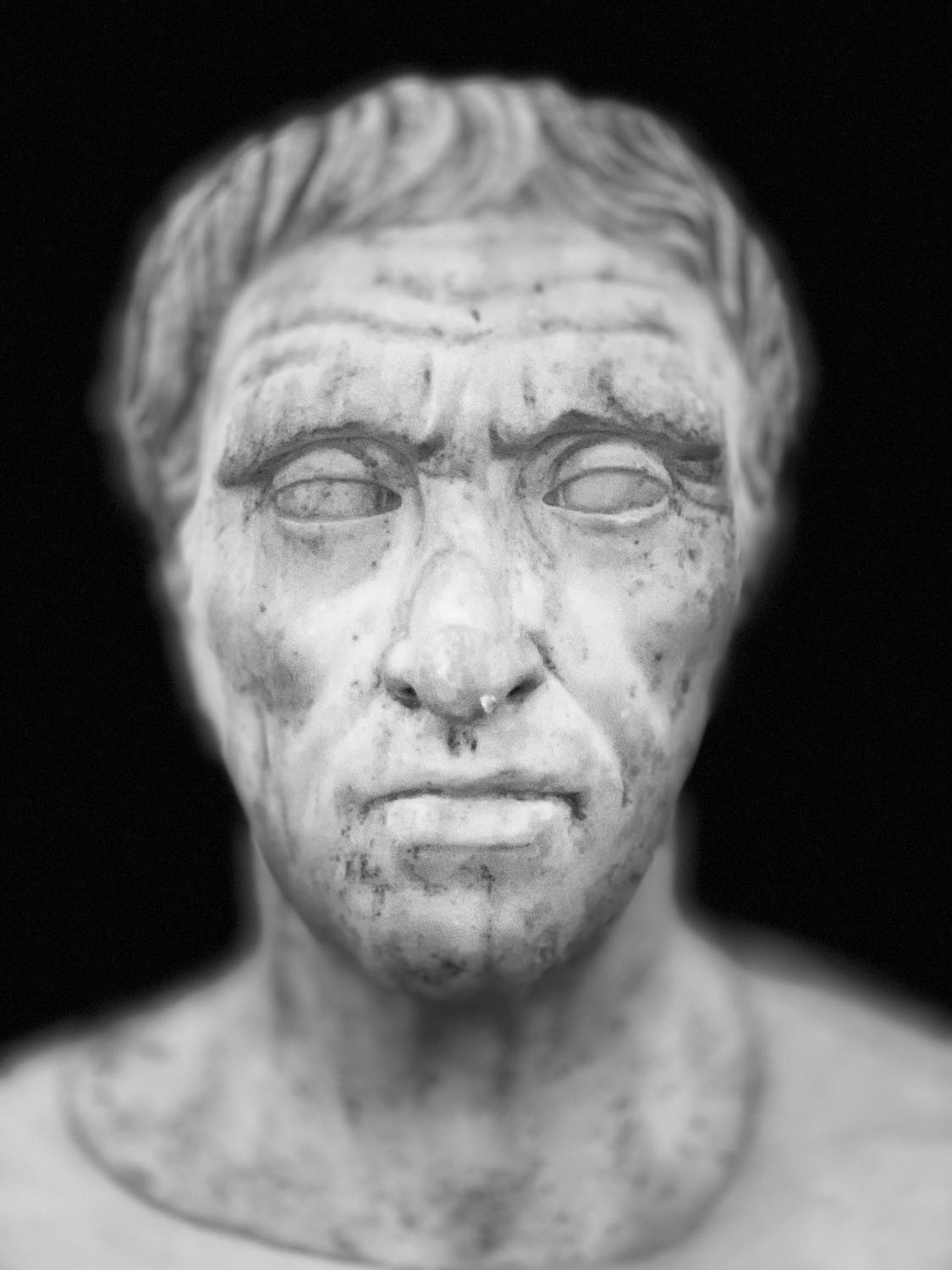Tête-à-Tête
Diana Matar
In May 2019, I was offered an artist’s residency at the National Archaeological Museum in Naples (MANN), which holds an extensive collection of Greek and Roman antiquities. It was supposed to be a time of research and, unlike most residencies, I wasn’t required to produce anything. Instead, it was a rare opportunity for contemplation and an uninterrupted period in which to engage with the museum’s works.
I had previously visited MANN fourteen years earlier. It was during a trip to Naples to convalesce after spending nine months in bed due to a serious illness. Over the month I spent in the city I got better and visited the museum several times. I can still remember the first time I saw Venus Callipyge, a Roman statue of a woman whose upper body is draped in a cloth of delicately carved marble. I was envious of her obvious robust health and I looked at her until I became physically tired; at her head turned back while she gazed down at her strong physique; at the exquisite expression on her face, poised between her slight insecurity and the admiration for her own body. To this day, in my mind, the museum and that Venus are linked to my recovery.
Returning to MANN I was reminded of how strong my body had become in the subsequent years. I was also aware that although I had a deep emotional connection to the museum, there was almost no association between its collection and my work. I had spent the intervening years photographing places, landscapes and buildings where terrible things had occurred, trying to capture the atmosphere where historical acts of violence have taken place. I was tired of death and of focusing my imagination and camera on places without bodies. I wanted to use the residency to push my work in new directions.
Days after I arrived there was a public demonstration in Naples. People gathered in the rain to protest the inhumane treatment of migrants arriving on Italy’s shores. The protesters had marched across the city and ended up in Piazza del Gesù Nuova, a square in the historic district where I was staying. Just as the speeches finished the rain, which had been pouring down, became a mist. But people remained, mingling in groups, talking and signing petitions. I could hear Italian, Arabic, African-accented French and English. The diversity of people’s faces captured my attention and I started photographing some of them. Most were still under their umbrellas and the proximity between us made for an intimate encounter, but none of the protesters turned away or asked not to be photographed.
I visited the museum every day. Angela, a specialist in Greek vases with a keen interest in photography, would accompany me through the silent galleries on days when the museum was closed, turning on lights if I desired, giving me information if I asked, but generally leaving me to encounter the works quietly on my own. Becoming more intimate with the vast collection, I narrowed my interest to classical faces.


Sign in to Granta.com.


